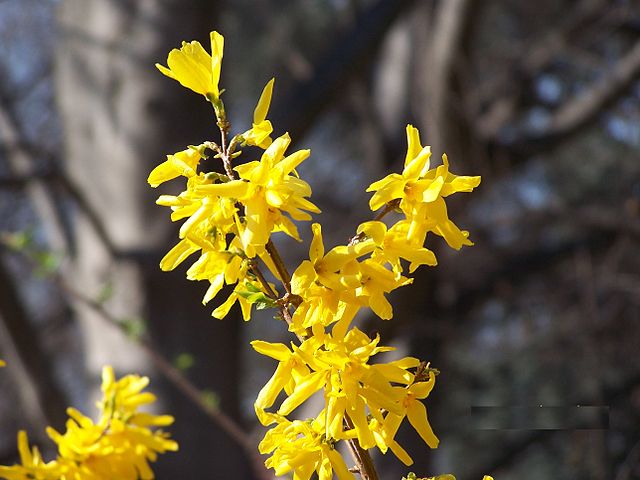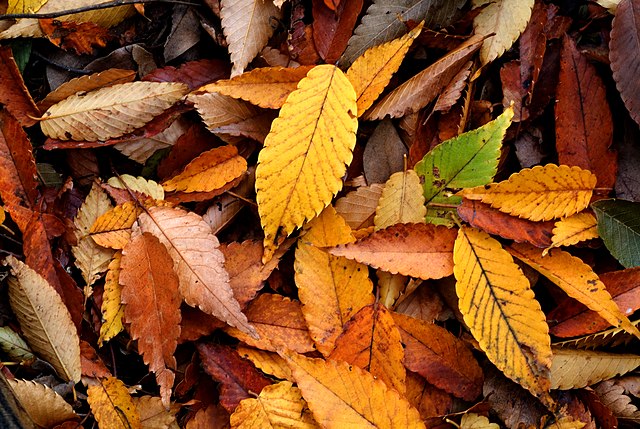Autumn, also known as fall in North American English, is one of the four temperate seasons on Earth. Outside the tropics, autumn marks the transition from summer to winter, in September or March. Autumn is the season when the duration of daylight becomes noticeably shorter and the temperature cools considerably. Day length decreases and night length increases as the season progresses until the winter solstice in December and June. One of its main features in temperate climates is the striking change in colour for the leaves of deciduous trees as they prepare to shed.
Leaves often turn orange and fall from trees in autumn.
Autumn
"Jesień" (Autumn) Józef Chełmoński picture of 1875 presenting a typical view of autumn in thePolish 19th-century countryside
Autumn colouration at the Kalevanpuisto park in Pori, Finland.
In the fields of horticulture and botany, the term deciduous means "falling off at maturity" and "tending to fall off", in reference to trees and shrubs that seasonally shed leaves, usually in the autumn; to the shedding of petals, after flowering; and to the shedding of ripe fruit. The antonym of deciduous in the botanical sense is evergreen.
Like a number of other deciduous plants, Forsythia flowers during the leafless season.
Deciduous plants in mid- to high latitudes shed their leaves as temperatures drop in autumn.
Deciduous trees were introduced to the temperate regions of Australia where they are used as ornamental plants, as seen here at a suburban street in Sydney.
Dry-season deciduous tropical forest








